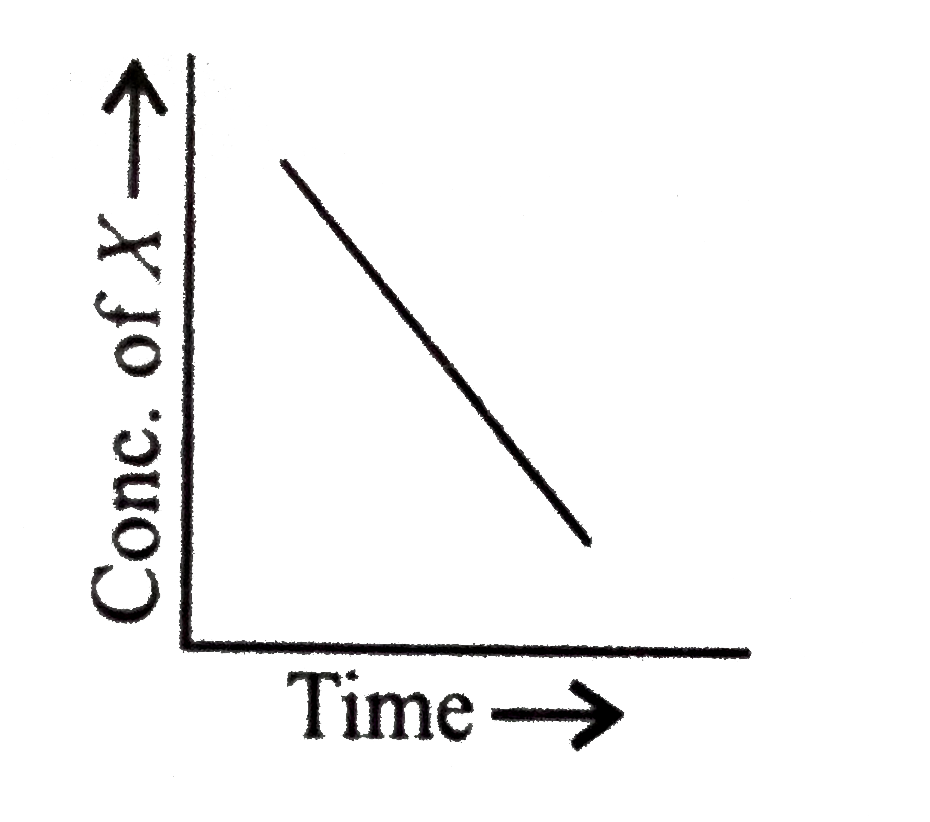Complete Solutions to Factors Influencing Rate Of Reaction of chapter CHEMICAL KINETICS of Class 12 book with complete answers and questions
| Class 12 | CHEMISTRY |
| Chapter | CHEMICAL KINETICS |
| NCERT FINGERTIPS | Factors Influencing Rate Of Reaction |
| Number Of Questions | 30 |
| Academic Year | 2023-24 |
The rate constant of a reaction depends on
View SolutionThe chemical reaction `2O_(3)rarr3O_(2)` proceeds as follows :
`O_(3)rarrO_(2)O" "` (fast)
`O+O_(3)rarr2O_(2)" "` (slow)
The rate law expression should be :
View SolutionRate constant in case of first order reaction is
View SolutionThe rate law for a reaction `A + B to C + D` is given by the expression k[A]. The rate of reaction will be
View SolutionA reaction in which reactants (R ) are converted into products (P) follows second order kinetics. If concentration of R is increased by four times, what will be the increase in the rate formation of p?
View SolutionThe rate of a gaseous reaction is given by the expresison `k[A]^(2)[B]^(3)`. The volume of the reaction vessel is suddenly reduced to one-half of the initial volume. The reaction rate relative to the original rate will be
View SolutionThe rate of formation of a dimer in a second order dimerisation reaction is `9.1 xx 10^(-6) mol L^(-1)s^(1)` at 0.01 mol `L^(-1)` monomer concentration. Calculate the rate consant for the reaction.
View SolutionThe rate constant for the reaction, `2N_(2)O_(5) rarr 4NO_(2) + O_(2)` is `3.0 xx 10^(-5) s^(-1)`. If the rate is `2.40 xx 10^(-5) mol L^(-1) s^(-1)`, then the initial concentration of `N_(2)O_(5)` (in `mol L^(-1)`) is
View SolutionThe order of reaction is decided by
View SolutionWhich of the following statements for the order of reaction is not correct ?
View SolutionWhich of the following is an example of a fractional order reaction?
View SolutionWhat will be the rate equation for the reaction `2X + Y to Z`, if the order of the reaction is zero?
View SolutionFor a reaction, `I^(-) + OCl^(-) to IO^(-) + Cl^(-)` in an aqueous medium, the rate of reaction is given by `(d[IO^(-)])/(dt) = k ([I^(-)[OCl^(-)])/([OH^(-)]))`. The overall order of reaction is
View SolutionFor a reaction, `2NO + 2H_(2) to N_(2) + 2H_(2) O`, the possible mechanism is
`NO hArr N_(2)O_(2)`
`N_(2)O_(2) + H_(2) overset("Slow")(to) N_(2)O + H_(2) O`
`N_(2) O + H_(2) O overset("fast")(to) N_(2) + H_(2) O`
What is the rate law and order of the reaction?
View SolutionRate constant of two reactions are given below. Identifying their order of reaction
`k = 5.3 xx 10^(-2) L mol^(-1) s^(-1)`
`k = 3.8 xx 10^(-4) s^(-1)`
View SolutionFind the values of A,B and C in the following table for the reaction `X + Y to Z`. The reaction is of first order w.r.t X and zero order w.r.t. Y.
`{:("Exp",[X](mol L^(-1)),[Y](mol L^(-1)),"Initial rate (mol L^(-1) s^(-1))),(1,0.1,0.1,2xx10^(-2)),(2,A,0.2,4 xx 10^(-2)),(3,0.4,0.4,B),(4,C,0.2,2 xx 10^(-2)):}`
View SolutionFor a chemical reaction `A rarr B`, the rate of reaction increases by a factor of `1.837` when the concentration of `A` is increased by `1.5` time. The order of reaction with respect to `A` is:
View SolutionFor a reaction A`to`B, the rate of reaction becomes twenty seven times when the concentration of A is increased three times. What is the order of the reaction?
View SolutionFor the reaction `A + B to` products, what will be the order of reaction with respect to A and B?
`{:("Exp",[A](mol L^(-1)),[B](mol L^(-1)),"Initial rate (mol L^(-1) s^(-1))),(1,2.5 xx 10^(-4), 3 xx 10^(-5), 5 xx 10^(-4)),(2,5 xx 10^(-4),6 xx 10^(-5), 4 xx 10^(-3)),(3, 1xx 10^(-3), 6 xx 10^(-5), 1.6 xx 10^(-2)):}`
View SolutionThe unit of rate constant for the reaction,
`2H_(2) + 2NO to 2H_(2)O + N_(2)`
Which has rate `= k [H_(2))[NO]^(2)`, is
View SolutionMatch the rate law given in column I with the dimensions of rate constants given in column II and mark the appropriate choice.
`{:("Column I","Column II"),((A) "Rate" = k[NH_(3)]^(0),(i) mol L^(-1) s^(-1)),((B)"Rate" = k[H_(2)O_(2)][I^(-)],(ii) L mol^(-1) s^(-1)),((C )"Rate" = k[CH_(3)CHO]^(3//2),(iii) S^(-1)),((D) "Rate" = k [C_(5)H_(5)CI],(iv)L^(1//2) mol^(-1//2) s^(-1)):}`
View SolutionThe decomposition of dimethyl ether is a fractional order reaction. The rate of reaction is givenby rate `= k (p_(CH_(3)OCH_(3)))^(3//2)`. If the pressure is measured in bar and time in minutes, then what are the units of rate and constant?
View SolutionThe unit of rate of reaction and rate of rate constant are same for a :
View SolutionThe rate of the reaction:
`CH_(3)COOC_(2)H_(5) + NaOH to Ch_(3)COONa + C_(2)H_(5) OH` is given by the equation,
rate `= k [CH_(3) COOC_(2)H_(5)][NaOH]`
If concenration is expressed in mol/L the units of k are
View SolutionFor a general reaction `X to Y`, the plot of conc. Of X vx time is given in the figure. What is the order of the reaction and what are the units of rate constant?

View SolutionFill in the blanks by choosing the correct option. Order of the reaction is the `underline(X)` of the powers to which concentration terms are raised in experimentally determined rate equation. The unit of first order rate constant is `underline(Y)`. The unit of first order rate constant when concentration measured in terms of pressure and time in minutes is `underline(Z)`
View SolutionThe number of molecules of the reactants taking part in a single step of the reaction tells about. :
View SolutionIn any unimolecular reaction
View SolutionThe overall rate of a reaction is governed by :
View SolutionFor a reaction `X + Y to Z`, rate `prop [X]`. What is (i) molecularity and (ii) order of reaction ?
View Solution
Factors Influencing Rate Of Reaction questions and complete solutions for chapter CHEMICAL KINETICS of MTG CHEMISTRY (ENGLISH) of Class 12